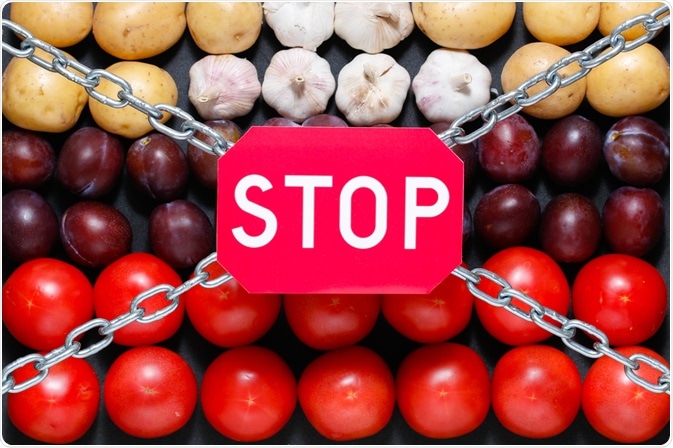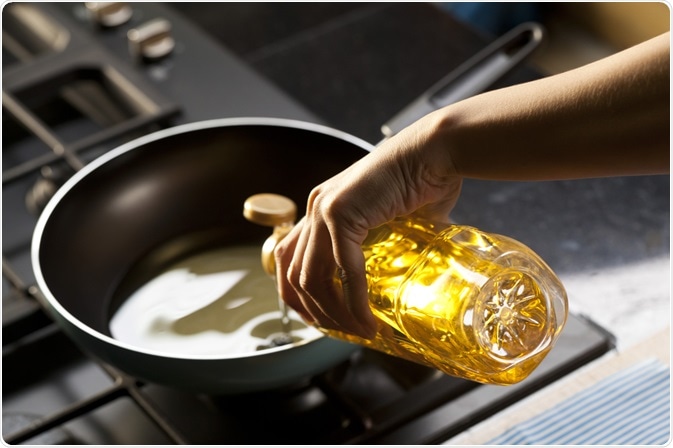Food companies around the world are under an increasing amount of pressure from international governments to be more transparent about the ingredients used in their products. Significant steps are being taken to made food items safer, which has led to an increasing number of substances and ingredients being banned from use in products intended for human consumption.

Image Credit: ART production/Shutterstock.com
As a result, reliable and sensitive analytical methods are required by the food industry to screen products for banned substances. This is particularly essential for products being imported from countries that have different regulations.
Below we discuss examples of where chromatography is being used to analyze the contents of food products to help identify illegal products and prevent them from being consumed, thus protecting the health and safety of the population from the negative impacts of banned food substances.
Banned food dyes
Several food dyes are now illegal to use in food products in Taiwan. Back in 2016, the Taiwanese FDA used liquid chromatography-mass spectrometry (LC-MS) to screen 36 food products for the presence of these banned substances. The Taiwanese FDA was able to identify the presence of 46 food dyes in the products, three of which were illegal.
These dyes were: Azorubine, which also goes by the name of carmoisine (E122), a dye that is also banned in Europe and China due to its links with allergies, asthma, and cancer; Amaranth, which is also banned in the US due to its suspected link with cancer; and Sulforhodamine, a red dye that carries known health implications and is banned in most of the world. Testing with LC-MS allowed the Taiwanese authorities to identify which products were unsafe and prevent them from entering food stores.
Both LC-MS and liquid chromatography/tandem mass spectrometry (LC-MS/MS) are commonplace in food labs to test products before they leave the factory. This ensures that products meet regional regulations and protect consumers’ health.
Illegal cooking oil
China has recently been facing a major problem in food safety as the use of illegal cooking oil (ICO), also known as “swill-cooking dirty oil” or “gutter oil” has increased in use. The product that is made by combining restaurant sewer refuse with rotten animal fat is being sold to small restaurants and street food vendors, putting consumers’ health at risk.
The Chinese authorities have focussed on finding an effective and reliable method of detecting the use of ICO in food products. Solid-phase extraction-liquid chromatography-mass spectrometry (SPE-LC-MS) has emerged as the standard analytical tool for identifying the use of ICO, preventing the consumption of such contaminated products.
SPE-LC-MS has been developed to identify the presence of capsaicinoids, the main spicy compounds in cayenne, which research has shown is a reliable indicator of the use of ICO. In using this method, oil samples are first extracted via sodium hydroxide, then, the sample is cleaned and processed with LC-MS.
The National Ministry of Health of China has authorized SPE-LC-MS as one of the four standard techniques for identifying the use of ICO. It has now become a standard analytical technique in food labs across the country.

Image Credit: ben bryant/Shutterstock.com
Identifying illegal additives
Most countries have a long lost of food additives that are banned for use in products intended for human consumption. As our global commitment to food safety continues, this list grows, and authorities require effective methods to detect the presence of these additives.
Additives can take the form of flavor enhancers, dyes, whitening agents, animal drugs, oils, and more. Even foods that do not seem processed can contain illegal additives, such as fish contaminated with water-binding agents that increase the weight of the product.
Ultrahigh-performance liquid chromatography-high-resolution mass spectrometry (UHPLC-HRMS) has emerged as a standard method for detecting a range of banned substances in food products. First, UHPLC works to separate the sample, next, HRMS is used to detect and identify the separated compounds.
Following this, data processing and differential analysis are applied to identify known illegal compounds. Research has proven the method to be effective at screening a wide range of food products for the presence of illegal substances, making the technique significant in the growing sector of food safety.
The importance of food screening
An increasing number of compounds that are being used in the preparation of food products intended for human consumption are being recognized as posing a risk to human health. Continued research is growing the list of banned substances and additives for use in food products, and, to keep the population safe from food containing these illegal substances, it has become of paramount importance to access reliable and effective screening techniques.
Chromatography presents itself as a sensitive, accurate, and proven method of detecting and quantifying illegal products in food items. It has seen widespread adoption by food agencies globally to help increase food safety.
Sources:
- Botek, P., Poustka, J., and Hajšlová, J., 2008. Determination of banned dyes in spices by liquid chromatography− mass spectrometry. Czech Journal of Food Sciences, 25(No. 1), pp.17-24. www.researchgate.net/.../242183453_Determination_of_Banned_Dyes_in_Spices_by_Liquid_Chromatography-Mass_Spectrometry
- Tsai, C., Kuo, C., and Shih, D., 2015. Determination of 20 synthetic dyes in chili powders and syrup-preserved fruits by liquid chromatography/tandem mass spectrometry. Journal of Food and Drug Analysis, 23(3), pp.453-462. https://www.sciencedirect.com/science/article/pii/S1021949814001525
- Wang, L., Jin, J., Wang, S., Wang, X., Tian, Y. and Chen, J., 2013. A novel method for the identification of illegal cooking oil (1): detection of three capsaicinoids with liquid chromatography-mass spectrometry. Chinese Journal of Chromatography, 30(11), pp.1094-1099. www.researchgate.net/.../235772698_A_novel_method_for_the_identification_of_illegal_cooking_oil_1_Detection_of_three_capsaicinoids_with_liquid_chromatography-mass_spectrometry
Further Reading
Last Updated: Oct 22, 2020